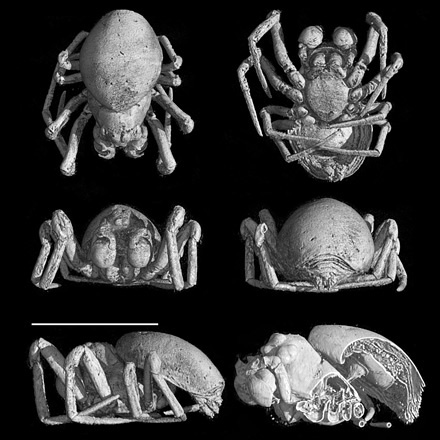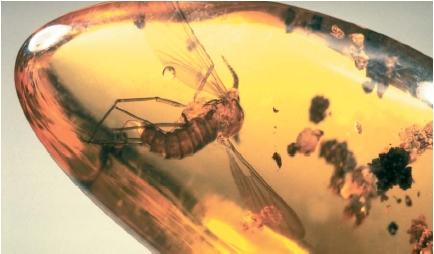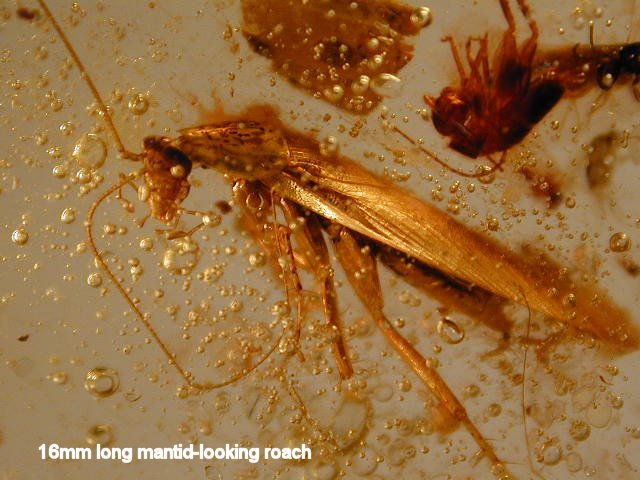
There are many different ways for animals and plants from our Earth's past to become fossilized, which allow us to study and analyze these long-lost specimens. For a long time, humanity did not know what to make of the fossils that would turn up, assigning legend to these remains. Large, seemingly incomprehensible bones coming out of the Earth no doubt spurred the human imagination to create tales and myths of monsters, dragons, and giants in Earth's past.
While most fossils discovered by humans are found in ancient sedimentary rocks, which over millenia turned the organic remains into stone, a slow process which is called ossification, there are a few types of fossils in which the organic remains have not been converted to stone. Natural asphalt (imagine the La Brea Tar Pits for example), peat (like the thousands of years old "mummies" found in the Scottish peat bogs), and -FUPPETS- personal favorite, AMBER, all preserve ancient specimens without actually destroying the organic remains.
AMBER is the fossilized remaining part of tree resin. When resin/sap first
flows from the tree, it is very thick and sticky, so as it runs down the trunk,
it may trap insects, spiders, and occasionally larger animals such as lizards.
These organisms can be preserved for millions of years with details of their
soft tissue, such as muscles and hair-like bristles, still intact.
Amber is a non-crystalline solid, mostly translucent, although opaque amber has been found, and it is a highly statically charged substance. Ancient alchemists would use amber to extract electrons from, though they did not know why their rubbing of amber caused a spark to occur. This property gave it supposed mystical qualities, just like lodestone's magnetism was seen as mystical in nature for thousands of years.
Possibly the single greatest quality of Amber is that it preserves near perfectly the soft tissue remains of ancient organisms, while allowing someone to view the fossil without destroying the piece of amber it is encased in, something no other fossil can provide.

This very rare specimen contains a tiny extinct frog inside.
This piece of Amber shows a tens of millions of years old mosquito inside.
This image shows a million year old cockroach surrounded by other critters.
This bad motherfucker has a praying mantis inside!
It is just mind blowing to -FUPPETS- how beautiful these fossils can be. The variety is staggering. For example, it is not just animals that get stuck in the sap, but plants as well. The following image is of an encased bee and an orchid flower. (Click on any of the images to enlarge)

Some amber however, is very opaque, and to see what is inside involves destroying the specimen. No longer! French scientists have developed a new technique to see inside these amber specimens. They use X-Ray's to build up an image of the interior of the amber, and can the see in very high detail, the animal/plant within. Here is an example of a spider fossil, which can now be seen in full 3-D.






No comments:
Post a Comment